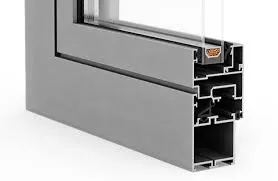Decorative Cast Iron Finials for Enhancing Architectural Designs and Garden Features
The Timeless Appeal of Cast Iron Finials
Cast iron finials are a testament to the elegance and craftsmanship of a bygone era. These ornate decorative elements, often found atop gates, fences, and rooftops, not only serve as a crowning touch but also symbolize the artistry and durability of cast iron as a material. This article delves into the history, significance, and contemporary relevance of cast iron finials.
Historically, the use of cast iron dates back to ancient China, but it was during the Industrial Revolution in the 18th and 19th centuries that the technique gained substantial traction in Europe and North America. Architects and craftsmen began to appreciate the versatility and strength of cast iron, which allowed for intricate designs that could withstand the test of time. Finials, which are decorative fittings that sit at the points of structures, quickly became popular as they added a stylistic flair to various architectural features.
Cast iron finials come in various shapes and designs, ranging from simple geometric forms to lavish, intricate patterns that depict flowers, mythical creatures, and other ornate motifs. They were commonly used on wrought iron fences, railings, and as roof decorations on buildings, particularly those designed in Victorian styles. This era, characterized by its eclectic mix of influences, saw finials become not just functional, but also a representation of wealth and social status. Homes with grand finials often signified the owner's affluence and taste.
One of the most striking aspects of cast iron finials is their resilience against the elements. Unlike other materials that may wear down or decay over time, cast iron possesses remarkable durability. This quality has allowed many finials to endure for over a century, becoming cherished historical markers in urban landscapes. As cities modernize, these architectural remnants serve as nostalgic reminders of the rich history and craftsmanship of earlier generations.
cast iron finials

In contemporary times, cast iron finials have experienced a resurgence in popularity, particularly among homeowners and architects looking to add a touch of character to their properties. Many builders and designers appreciate the timeless elegance that these finials can bring to both historical restorations and new constructions. Whether adorning a rustic farmhouse or a modern urban dwelling, finials can effectively bridge the gap between antiquity and contemporary design.
Moreover, as sustainability and restoration become increasingly vital in modern architecture, cast iron's longevity offers an eco-friendly alternative to short-lived materials. The ability to restore and repaint cast iron finials allows for a beautiful union of functionality and aesthetic appeal. Many artisans now specialize in restoring and replicating these historic pieces, ensuring that their beauty and significance are preserved for future generations.
The charm of cast iron finials is not limited to architecture; they are also popular in garden décor. Garden enthusiasts use smaller finials as decoration atop fences, gates, or as standalone decorative pieces in landscaping. Their presence adds a touch of sophistication and artistry to outdoor spaces, blending seamlessly with nature while offering a nod to traditional craftsmanship.
In conclusion, cast iron finials hold a significant place in architectural history and continue to be a favored decorative element today. Their combination of artistry, durability, and historical significance contributes to their timeless appeal. Whether as a charming addition to a home or a notable piece of history in a cityscape, cast iron finials remind us of the beauty of craftsmanship and the rich narratives woven into the structures that surround us. As we look toward the future, it is essential to appreciate and maintain these links to our past, ensuring that the artistry of cast iron finials continues to inspire generations to come.
-
Wrought Iron Components: Timeless Elegance and Structural StrengthNewsJul.28,2025
-
Window Hardware Essentials: Rollers, Handles, and Locking SolutionsNewsJul.28,2025
-
Small Agricultural Processing Machines: Corn Threshers, Cassava Chippers, Grain Peelers & Chaff CuttersNewsJul.28,2025
-
Sliding Rollers: Smooth, Silent, and Built to LastNewsJul.28,2025
-
Cast Iron Stoves: Timeless Heating with Modern EfficiencyNewsJul.28,2025
-
Cast Iron Pipe and Fitting: Durable, Fire-Resistant Solutions for Plumbing and DrainageNewsJul.28,2025
-
 Wrought Iron Components: Timeless Elegance and Structural StrengthJul-28-2025Wrought Iron Components: Timeless Elegance and Structural Strength
Wrought Iron Components: Timeless Elegance and Structural StrengthJul-28-2025Wrought Iron Components: Timeless Elegance and Structural Strength -
 Window Hardware Essentials: Rollers, Handles, and Locking SolutionsJul-28-2025Window Hardware Essentials: Rollers, Handles, and Locking Solutions
Window Hardware Essentials: Rollers, Handles, and Locking SolutionsJul-28-2025Window Hardware Essentials: Rollers, Handles, and Locking Solutions -
 Small Agricultural Processing Machines: Corn Threshers, Cassava Chippers, Grain Peelers & Chaff CuttersJul-28-2025Small Agricultural Processing Machines: Corn Threshers, Cassava Chippers, Grain Peelers & Chaff Cutters
Small Agricultural Processing Machines: Corn Threshers, Cassava Chippers, Grain Peelers & Chaff CuttersJul-28-2025Small Agricultural Processing Machines: Corn Threshers, Cassava Chippers, Grain Peelers & Chaff Cutters












